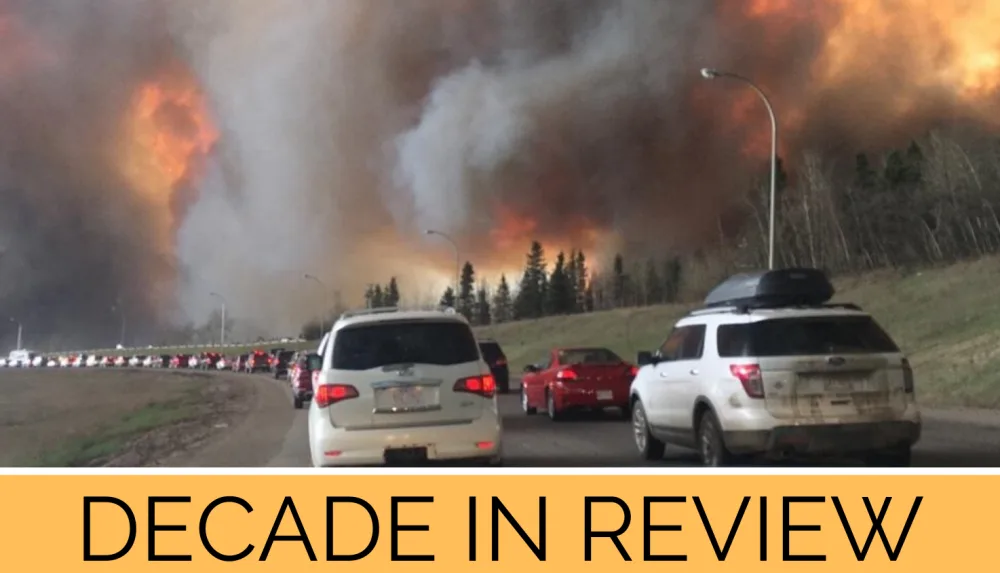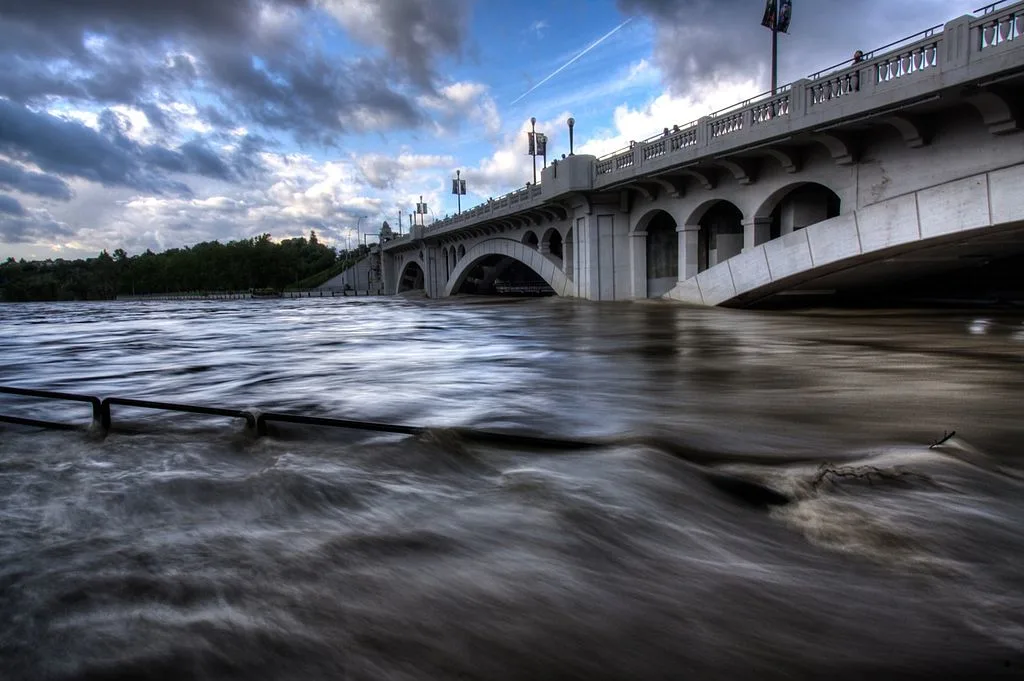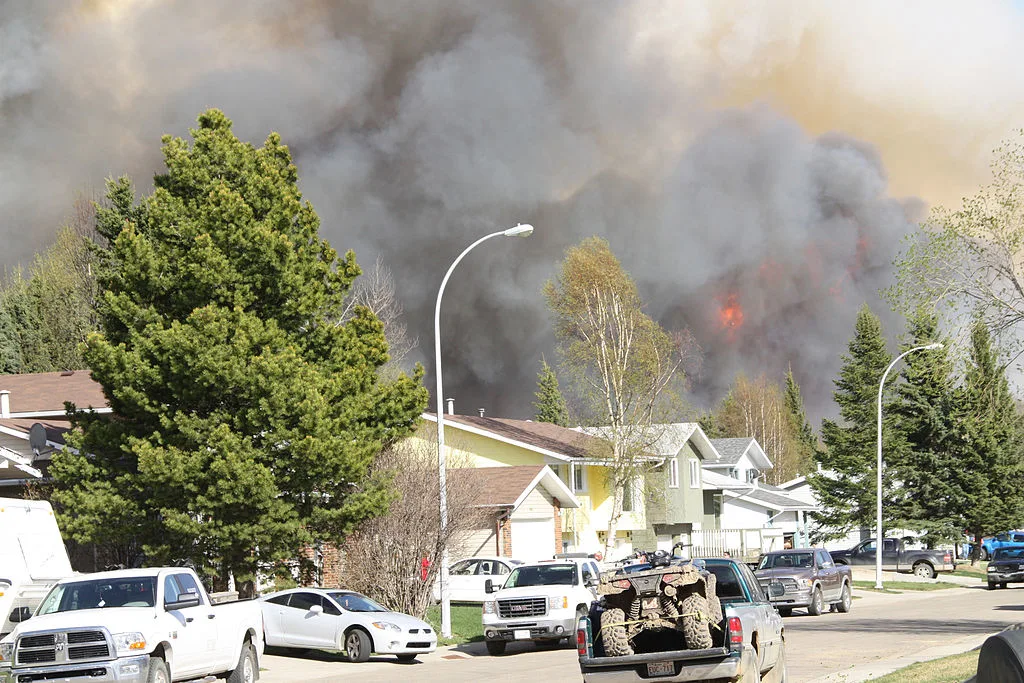
Top five costliest Canadian natural disasters of the decade
Floods, wildfires and hailstorms put the dollar value of the decade's most destructive storms comfortably in the billions.
1. FORT MCMURRAY WILDFIRE, 2016
The weather conditions of the spring of 2016 in northern Alberta did everything possible to make this massive wildfire as destructive as it could be. Environment Canada says that particular winter-to-spring transition period was the driest in 72 years, with the forest floor completely parched. When the fire started on May 1, it was initially contained, but blustery winds sent it roaring out of control, bearing down on Fort McMurray, part of the Regional Municipality of Wood Buffalo.
Some 88,000 people were forced to flee, and though there were no direct deaths as a result of the fire, two people died in a collision during the evacuation. By the time the fire was finally brought to heel, it had burned 2,400 structures and more than 18,000 vehicles, and scorched half a million hectares of land, roughly the size of Prince Edward Island.

Image credit: Very large flames and heavy smoke surrounded congested Highway 63 South. DarrenRD/Wikimedia Commons. CC BY-SA 4.0.
In terms of cost, the fire is far and away the most expensive Canadian natural disaster by far. The Insurance Bureau of Canada estimated insured losses of some $3.6 billion, but a 2017 study found the total economic impact, from infrastructure damage through to lost profits in the oilsands hub, could eventually exceed $10 billion.
2. SOUTHERN ALBERTA FLOODS, 2013

Image: Flooding at the Centre Street Bridge in Calgary, 2013. Ryan L.C. Quan/Wikimedia Commons
The epic floods of southern Alberta in June 2013 were months in the making, according to this lookback from Environment Canada. The first snows of the previous year came as early as Thanksgiving for the south, with snowpack a metre deep in the mountains by the spring, which turned out to be a wet one. In June, days of downpours -- 75-100 mm in two and a half days for some areas, with one community west of High River drenched with 345 mm -- finally tipped the balance, with the ground much too saturated with snowmelt and previous rains to absorb the latest deluge.
The resulting floods damaged thousands of homes and businesses, including 3,000 in Calgary alone, where floodwaters reached as high as the 10th row of the city’s famed Saddledome. Beyond the city, the Trans-Canada Highway was closed, isolating some communities. At least 100,000 people were forced to flee their homes, with some communities like High River and Bragg Creek under mandatory evacuation order. Four people were killed.
The $2-billion insurance bill was the highest in Canadian history at the time, but total estimated economic damage was estimated at around three times higher.
3. TORONTO FLOODING, 2013
Most communities can handle the occasional thunderstorm, even severe ones, but the setup in Toronto on July 8, 2013, made for a potent combination that proved too much for the city’s storm drainage infrastructure to handle.
Environment Canada says two separate storm cells joined forces and stalled over the city, deluging parts of Toronto with as much rain in two hours as it typically gets in an entire month -- most of it coming during rush hour. Compounding the event, the torrent fell on concrete rather than on grass or soil that might have absorbed some of it. Numerous roads, including some stretches of highway and railroad, were soon submerged.
WATCH BELOW: WHY DOES THE DON VALLEY PARKWAY FLOOD SO OFTEN?
Flights were cancelled, and thousands of motorists were either stranded in their vehicles in need of water rescue, or else were forced to abandon them. Some 1,400 GO Transit commuters also had to be rescued. Half a million Toronto Hydro customers were without power, and thousands of basements were ruined.
The Insurance Bureau of Canada estimated the damage at a little under a billion dollars.
4. SLAVE LAKE FIRE, 2011

Image: Fire over the Town of Slave Lake at 5:40 pm on May 15, 2011. Courtesy: mrsramsay/Wikimedia Commons. CC BY-SA 3.0
Alberta, sadly, has some experience with raging wildfires consuming its communities, having seen the partial destruction of the town of Slave Lake five years before the Fort McMurray fire.
The mid-May fire, which was later found to be the result of arson, was stoked by 100 km/h winds and fuelled by arid conditions, eventually covering 4,700 hectares. It roared past fire barriers to fall upon Slave Lake, forcing its 7,000 residents to evacuate. By the time it was brought under control, a third of the town had been destroyed by the flames.
The insurance costs, at around $700 million, made the fire the second-costliest on record at the time, outstripped only by the 1998 ice storm in Ontario and Quebec.
5. CALGARY'S TWO HAILSTORMS, 2012
The Prairie provinces feature some wicked thunderstorms, occasionally marked by large hail. Not the best experience for residents of the region’s cities and farms.
In August of 2012, two separate storms two days apart gave parts of Alberta a thorough thrashing. The first left plenty of damaged cars, broken glass and ruined gardens across Calgary, with even the Saddledome’s roof damaged. The second also featured downpours and winds in excess of 100 km/h, and the two combined for some $500 million in insured damages, half the value of all claims in Canada that year.
It was deja vu two years later, when a wicked storm in more or less the same area brought golfball and baseball-sized hail, spread out over 250 km. The Insurance Bureau of Canada put that storm’s price tag at around $450 million -- not including crop damage claims filed to provincial agencies.
HURRICANE DORIAN OFFICIALLY MOST COSTLY STORM FOR NOVA SCOTIA POWER:
--
Thumbnail image courtesy: DarrenRD/Wikimedia Commons. CC BY-SA 4.0.











